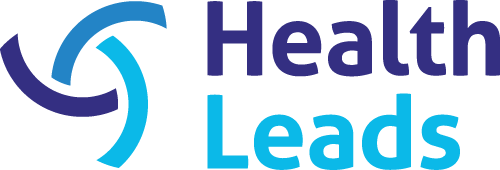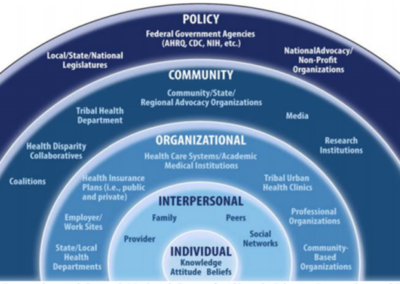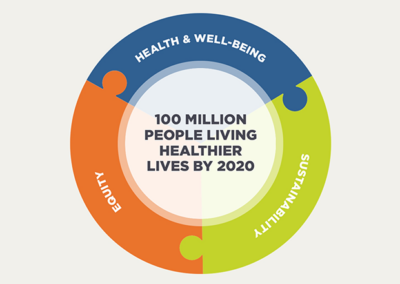A Brave New World for Community Resource Navigation

In today’s “smart” world, accurate, real-time information might be the standard, but community resource databases have a long way to catch up. With software that tracks details about everything from food bank hours to child care services to employment assistance programs in a local area, up-to-date information can mean the difference between a family sitting down to share a warm dinner or going to bed hungry. As a Resource Operations Associate, I’m part of a six-person team dedicated to ensuring that families have the information they need to get connected to health essentials. We update hundreds of records a week, but even we’re no match for the sheer size of the data.
Since Health Leads first created its own resource referral software in 2013, more and more organizations have sprung up to fill resource information gaps across the country. But despite being driven by a shared mission to increase access to the essential resources we all need to be healthy, competition for funding and partnerships has led to the silo-ing of a field itself built to break down the barriers between health systems and social services–to everyone’s detriment.
We’ve long dreamt of a brave new world where community resource databases eliminate redundancy, easily share our information and above all, elevate the quality of our data for the folks that need it most. Needless to say, we were overjoyed to hear Benetech, a nonprofit developing software for social good, set this idea in motion with the creation of a bold data collaboration pilot.
The Benetech Service Net pilot has brought together six community resource databases in California’s Bay Area – ShelterTech, Alameda County 211, The Legal Aid Association of California, San Mateo County, United Way Bay Area and Health Leads Reach — to explore how a new platform can help us share and compare data on the same resources. Since February of 2019, we’ve collectively uploaded our information of Bay Area resources to the web-based software. The software translates our organizations’ unique taxonomies, then compares names, addresses and other details to match the resources in our database to that same record in another. It allows us to view information side-by-side, confirm a resource’s information is correct or adjust our records for discrepancies — and the more we use it, the smarter its matching algorithm becomes.
As part of the project, our teams also meet monthly to discuss our experience with the software–and that’s where the real magic begins. Though the pilot is just six months long, we’ve already learned so much from each other about how we work and begun brainstorming meaningful ways to continue desilo-ing our work long after the project wraps up. The Benetech pilot has shown me that meaningful change is on the horizon, but first the field of community resource databases needs take these four lessons from our experience to heart:
Prioritize trust-building. For community resource databases to be effective, they must place community at the center of how they collect and share data. But how do you get someone, especially your “competition,” to show their cards and feel safe doing it? By bringing on a diverse group of participants in equal partnership, the pilot’s created space and trust to leverage everyone’s unique strengths and expertise–whether that of a hyper-local CBO or a national organization like ours.
Share solidarity in the difficulty of our work. Participating in the pilot brought me together with many others that do similar work. Folks that know the ins and outs of resource referral and with whom we could be honest about what we do well and what we want to improve. Namely, how often we update our resources. Updating takes time and staff to do right, and we seem to often be short on at least one. Uncovering the challenges we share in common points to trends in our field that need improvement, not just what we individually need to improve. This can help us pinpoint future opportunities for investments in workforce, advocate for new funding streams or promote software to move the field forward.
Raise the quality bar everywhere. Sharing our standards with each other allows for cross pollination. Hearing about the best practices from other pilot partners has inspired me to look into our best practices and see how we can be better. By combining our strengths to better ourselves, hopefully in the future we can establish industry standards so other systems can step into what we created.
Advocate for funding models that facilitate broader and easier data-sharing. Currently, foundation funding structures of community-resource organizations keep us locked as competitors in a kind of Battle Royale. To get money, we need to prove that we are the “better version” of the other guy, even if we are are both doing meaningful work for the community. Not only does this not allow for collaboration but it makes that collaboration potentially dangerous to our financial operation. If we work together, can we collectively advocate for sustainable funding streams outside of foundations?
As the Bay Area Service Net pilot wraps up this summer, and we evaluate the impact and expansion of this data collaboration initiative, I hope these insights and more will stay with us and this cohort. We’re grateful to Benetech for facilitating this shared experience and helping push the field of community resource database into the 21st century.
Arantxa Sanchez-Cruz is a Resource Operations Associate at Health Leads.




